Exploring UHMWPE Fibre: Properties and Innovations
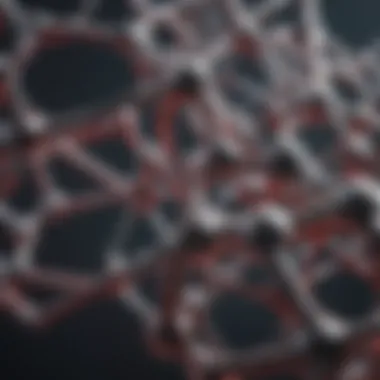

Intro
Ultra High Molecular Weight Polyethylene, commonly referred to as UHMWPE, is a distinctive polymer renowned for its remarkable mechanical properties and utility across various industries. Its molecular structure, characterized by extremely high molecular weight, contributes to notable durability, resistance to abrasion, and exceptional strength. This article will delve into the intricate science of UHMWPE fibre, assessing its unique properties and extensive applications, while also exploring its anticipated future within the realm of material science.
By understanding the molecular basis of UHMWPE, we can illuminate its importance in fields such as medicine, sports, and manufacturing. Each sector benefits from these fibers’ unique characteristics, leading to enhanced performance and innovation. This narrative aims to provide a comprehensive outlook on UHMWPE, ensuring readers gain a thorough understanding of its advantages and the ongoing developments prompting future innovations.
Methodology
Overview of Research Methods Used
The study of UHMWPE fibre necessitates a multidisciplinary approach. Both qualitative and quantitative methods are implemented to ascertain its properties and applications. Standard practices include mechanical testing to evaluate strength, flexibility, and durability under varied conditions. Additionally, experimental setups are designed to explore the interaction of UHMWPE with other materials, revealing synergies that might enhance functionality.
Data Collection Techniques
Data is acquired from several avenues:
- Literature Review: Analysis of existing research provides a foundational understanding of UHMWPE characteristics.
- Experimental Data: Laboratory testing yields real-time insights into the performance of UHMWPE under specific circumstances.
- Surveys and Interviews: Engaging industry professionals furnishes practical perspectives on the applicability of UHMWPE in various domains.
This amalgamation of methods cultivates a robust framework for understanding the implications of this remarkable fibre across diverse applications.
Properties of UHMWPE Fibre
UHMWPE possesses several intrinsic properties that contribute to its desirability. These include, but are not limited to:
- High Strength-to-Weight Ratio: Exhibiting extraordinary strength, UHMWPE is significantly lighter than steel.
- Resistance to Chemicals: It does not react with many chemicals, maintaining integrity in harsh environments.
- Low Friction Coefficient: This characteristic promotes smooth interactions with other surfaces, enhancing usability in various mechanical applications.
- UV Resistance: UHMWPE can withstand UV radiation, making it suitable for outdoor applications.
"The unique properties of UHMWPE not only enable its use in specialized applications but also showcase its potential to reshape various industries."
Applications of UHMWPE Fibre
The versatility of UHMWPE has led to its adoption across numerous fields:
- Medical Applications: Used in joint replacements and surgical implants due to its biocompatibility and wear resistance.
- Sports Equipment: Implemented in high-performance gear, such as helmets and protective clothing.
- Manufacturing: Its low friction and wear properties make it suitable for conveyor belts and other industrial components.
Future Directions
Upcoming Trends in Research
Advancements in SME (Smart Manufacturing Engineering) are prompting new explorations into UHMWPE. Researchers are increasingly interested in blending UHMWPE with other materials to enhance performance and functionality. These hybrid materials may unveil applications in aerospace and advanced medical devices.
Areas Requiring Further Investigation
Despite the considerable knowledge of UHMWPE, certain areas necessitate additional exploration, including:
- Sustainability: Addressing the environmental implications of UHMWPE production and disposal.
- Long-term Performance Studies: Understanding how UHMWPE performs over extended periods in varied environments.
- Novel Applications: Identifying new industries that can benefit from its properties.
The trajectory of UHMWPE fibre appears promising as ongoing research continues to unlock its potential and application scope, leading to innovations that may redefine material science.
Prologue to UHMWPE Fibre
Ultra High Molecular Weight Polyethylene (UHMWPE) fibre has emerged as a significant material due to its exceptional properties and diverse applications. Understanding UHMWPE fibre is crucial for various sectors, including medical, defense, and industrial fields. The unique characteristics of this fibre, such as its high tensile strength and low weight, make it a preferred choice in situations where durability and performance are paramount.
Definition and Characteristics
UHMWPE is a linear polyethylene with a molecular weight typically greater than 3.1 million g/mol. This high molecular weight results in a very low level of crystallinity and makes the fibre exceptionally strong and resistant to abrasion. Key characteristics of UHMWPE fibre include:
- High tensile strength: UHMWPE has a tensile strength up to five times greater than that of steel, making it ideal for high-stress applications.
- Lightweight: Despite its strength, UHMWPE is remarkably lightweight, enhancing comfort and usability in various applications.
- Chemical resistance: It exhibits excellent resistance to a wide range of chemicals, ensuring it can withstand harsh environments without degradation.
- Low friction coefficient: This property contributes to its utility in applications where low wear is beneficial.
Given these properties, UHMWPE fibre is used in ropes, nets, and as reinforcement in composite materials, among other uses.
Historical Background
The development of UHMWPE dates back to the 1950s when it was first synthesized by chemists. Initially, its potential was not fully realized, as researchers were focused on other forms of polyethylene. However, by the 1970s, advancements in polymer chemistry led to the commercial production of UHMWPE.
One major breakthrough was the introduction of high-performance fibres, enabling its use in the manufacturing of ballistic vests and surgical implants. The material's use in these areas demonstrated its capabilities, leading to increased research and investment in the fibre, further solidifying its role in various technological innovations.
Today, ectors continue to explore UHMWPE fibre for advanced applications, capitalizing on its unique benefits. Scholars and engineers alike recognize its crucial historical advancements that have paved the way for modern uses and ongoing developments in this field.
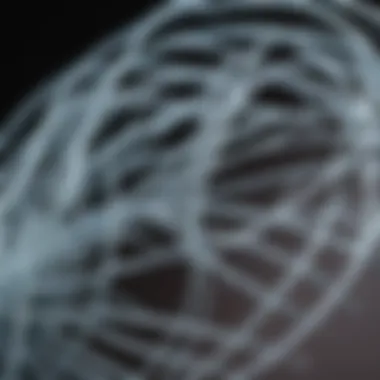

Molecular Structure of UHMWPE
Understanding the molecular structure of Ultra High Molecular Weight Polyethylene (UHMWPE) is essential for comprehending its remarkable properties and applications. The unique arrangement of its polymer chains largely contributes to the materials' phenomenal performance in various fields. The molecular structure significantly influences not only the physical and thermal characteristics of UHMWPE but also its mechanical resilience and overall longevity. Moreover, it plays a crucial role in determining how UHMWPE interacts with other substances, whether in different industrial products or the human body in medical applications.
Polymerization Process
The polymerization process of UHMWPE involves the chemical reaction where ethylene monomers are uniquely combined to form long chain molecules. This procedure is fundamental because it dictates the final properties of the UHMWPE material. Typically, the polymerization is carried out using techniques like Ziegler-Natta catalysis or metallocene catalysis, which allow for precise control over molecular weight and distribution.
Due to its high molecular weight, UHMWPE exhibits a high degree of crystallinity. This crystallinity is critical as it influences the material's tensile strength and impact resistance. In practical terms, the polymerization process can last several hours, producing vast lengths of polymer chains that lead to the high-performance characteristics for which UHMWPE is known.
Some key aspects of the polymerization process include the following considerations:
- Catalysts: The choice of catalyst affects the efficiency and outcome of the polymerization.
- Temperature Control: Temperature influences the reaction kinetics and helps achieve desired molecular weights.
- Reactor Design: The configuration of the reactor can also determine how effectively the polymerization occurs.
Degree of Polymerization
The degree of polymerization (DP) refers to the average number of repeating units in a polymer chain. For UHMWPE, the DP can be exceedingly high, often exceeding 200,000. This level of polymerization is one of the reasons for its immense strength and durability. High DP results in longer chain lengths, which increases entanglement among the chains. This entanglement contributes to the resulting mechanical properties, which makes UHMWPE an ideal material for applications that require strength and resilience under stress.
A higher degree of polymerization generally leads to better mechanical properties, such as:
- Enhanced Tensile Strength: The long chains provide more significant molecular interaction, thereby increasing resistance to stress.
- Improved Wear Resistance: With greater lengths, the chains provide better load distribution, minimizing wear over time.
- Lower Permeability: Higher DP often means that the material has reduced permeability to gases and liquids, an essential factor in many industrial applications.
Physical Properties
In understanding the significance of Ultra High Molecular Weight Polyethylene (UHMWPE) fibre, physical properties serve as the backbone of its utility across various applications. These properties directly impact UHMWPE’s performance in demanding uses, thus underscoring the importance of studying them thoroughly. The exceptional physical characteristics of UHMWPE, like tensile strength, impact resistance, and chemical resistance, provide insights into why this material is favored in industries ranging from medicine to defense.
Tensile Strength
Tensile strength is a critical parameter defining the ability of UHMWPE fibre to withstand stretching forces. This strength is measured by the maximum stress that the material can bear while being pulled before breaking. UHMWPE possesses a remarkable tensile strength that makes it one of the strongest synthetic fibres available today. This property is particularly advantageous in applications such as ropes, cables, and protective gear. For example, UHMWPE fibres are used in bulletproof vests, where high tensile strength is crucial for stopping projectiles without tearing.
Factors contributing to the high tensile strength of UHMWPE include its molecular structure, which consists of long chains of polyethylene that provide a significant amount of resistance to deformation. As such, the orientation of these chains during processing influences the strength of the final product. Notably, when UHMWPE undergoes certain processing techniques, the alignment of its molecular chains can enhance its tensile properties even further.
Impact Resistance
Impact resistance refers to the ability of a material to absorb energy when it is subjected to a sudden force or shock. This property is of utmost significance for materials used in environments where they encounter high-stress factors, such as collisions or falls. UHMWPE exhibits excellent impact resistance due to its high molecular weight and structural integrity.
In practical applications, this property allows UHMWPE to be used in products like helmets, where energy dispersion is necessary to protect the wearer from head injuries. Additionally, UHMWPE’s impact resistance has made it a favorable choice for bulletproof applications, where minimizing damage from impacts is essential. Its tough nature defies conventional expectations, ensuring safety and reliability in critical situations.
Chemical Resistance
Chemical resistance of UHMWPE fibre showcases its capability to withstand exposure to various chemicals without deteriorating or losing its functional properties. This characteristic makes it an ideal candidate for use in diverse industries, including medical and manufacturing. In the medical field, UHMWPE is utilized in joint replacement materials because it does not react adversely to bodily fluids. Additionally, in industrial settings, its chemical resistance allows it to be used for components that need to endure exposure to solvents, acids, and bases.
The chemical stability of UHMWPE is rooted in its non-polar structure, which minimizes the likelihood of degradation from chemical agents. This resistance not only prolongs the material's life but also ensures safety in products that must maintain their integrity over time, especially in challenging environments.
Understanding the physical properties of UHMWPE fibre is crucial for anyone involved in research or applications where this unique material is employed. Its outstanding tensile strength, impact resistance, and chemical resistance position UHMWPE as a versatile and valuable solution across industries.
Thermal Properties
The thermal properties of UHMWPE play a key role in determining its suitability for various applications. Understanding these properties is essential for engineers and designers who aim to leverage the unique characteristics of this material. Among these properties, melting point, heat resistance, and thermal conductivity are particularly significant.
Melting Point and Heat Resistance
UHMWPE exhibits a high melting point, generally around 130 to 136 degrees Celsius. This trait is crucial as it allows UHMWPE to maintain structural integrity in environments where other materials might fail. The high melting point makes UHMWPE suitable for applications subjected to elevated temperatures, such as components in automotive and aerospace industries.
Heat resistance is equally important. UHMWPE can endure thermal stresses without undergoing significant degradation. This resilience against heat leads to a longer lifespan of products made from this material. In sectors that rely on high-performance materials, such as medical devices and specialized textiles, these thermal properties can be pivotal.
Thermal Conductivity
Thermal conductivity refers to a material's ability to conduct heat. UHMWPE is characterized by low thermal conductivity, which implies it does not transfer heat efficiently. This can be beneficial in various contexts.
- Insulation Applications: Low thermal conductivity makes UHMWPE a great insulator. It can effectively reduce heat transfer, useful in applications like thermal jackets for equipment.
- Protective Gear: The low thermal conductivity also contributes to safety in products like protective clothing in military and law enforcement. Wearers are less exposed to hazardous temperatures.
- Comparative Analysis: Compared to materials like metals, UHMWPE’s thermal conductivity is significantly lower, making it advantageous in cases where heat retention is necessary.
"The unique combination of high melting point and low thermal conductivity positions UHMWPE as a leading choice for advanced applications across diverse industries."
Applications of UHMWPE Fibre
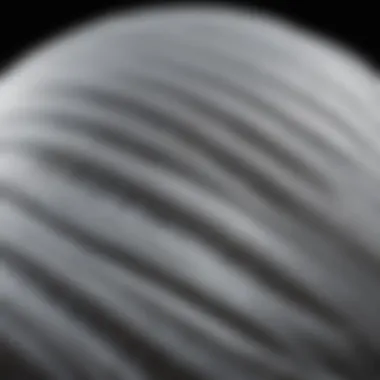

The applications of UHMWPE fibre are extensive and impactful across various sectors. Its remarkable properties make it suitable for numerous uses, ranging from medical devices to military gear. Understanding these applications is vital, as it highlights the role of UHMWPE in modern technology and industry.
Medical Uses
In the medical field, UHMWPE fibre plays a critical role. It is widely used in joint replacement implants. The combination of low friction and high wear resistance extends the life of prosthetic joints, reducing the need for replacements. Additionally, UHMWPE is used in sutures and wound dressings due to its biocompatibility and strength. These medical applications benefit from the material's durability, which contributes to better patient outcomes and reduced healthcare costs over time.
Textile and Apparel Industry
The textile and apparel industry also greatly benefits from UHMWPE. It is incorporated into high-performance sportswear due to its lightweight nature and exceptional strength. This makes clothing not only comfortable but also capable of providing protection in various activities. Furthermore, it is utilized in outdoor gear, such as ropes and harnesses, where strength and reliability are paramount. The use of UHMWPE in textiles offers significant advantages, including enhanced durability in harsh conditions.
Aerospace and Marine Applications
In aerospace and marine settings, UHMWPE fibre is used for its superior properties. In aerospace, it appears in components that require low weight and high strength, such as in drone frames and composite materials. This leads to more fuel-efficient flights. In marine applications, UHMWPE is important for ropes and nets used in fishing and anchoring, addressing concerns such as UV degradation and water abrasion. The longevity and resistance of UHMWPE make it a preferred choice, ensuring safety and efficiency.
Defense and Law Enforcement
In the defense and law enforcement sectors, the use of UHMWPE is vital. The fibre is incorporated into body armor and equipment due to its lightweight yet strong nature. Its ability to stop bullets and resist cuts provides crucial protection for personnel in dangerous situations. Additionally, UHMWPE is used in tactical gear, enhancing mobility and safety. The implications for officer safety and effectiveness in the field cannot be overstated, signifying an important aspect of modern protective equipment.
"The versatility of UHMWPE fibre allows it to meet complex demands in various applications, contributing significantly to safety and performance."
Overall, the diverse applications of UHMWPE fibre demonstrate its value across multiple industries. Its unique properties make it a material of choice for innovative solutions. This positions UHMWPE at the forefront of developments in technology and safety.
Advantages of UHMWPE Fibre
Ultra High Molecular Weight Polyethylene (UHMWPE) fibre is famous for its remarkable advantages that set it apart from other materials. Understanding these benefits is crucial, especially in various applications ranging from medical devices to aerospace solutions. This section will explore two primary advantages: the low weight-to-strength ratio and the durability and longevity of UHMWPE fibre, which contribute significantly to its growing popularity in many industries.
Low Weight-to-Strength Ratio
One of the key benefits of UHMWPE fibre is its exceptional low weight-to-strength ratio. This characteristic makes it uniquely suited for applications where both strength and weight are critical factors. The fibre’s tensile strength is significantly higher than many metals, which allows for lightweight designs without compromising structural integrity.
In actual use, lighter materials can translate to increased efficiency and performance in various sectors. For example, in the aerospace industry, using UHMWPE means that aircraft components can be lighter, contributing to fuel savings and enhanced payload capacities. Similarly, in the sports equipment market, bicycle frames made with UHMWPE allow athletes to achieve better speeds and handling.
Furthermore, the low weight-to-strength ratio enhances safety in applications requiring protective gear. For instance, UHMWPE is often used in ballistic vests, where its strength provides excellent protection from projectiles without the cumbersome weight of traditional materials. This serves to highlight how the advantages of UHMWPE can be transformative across different fields.
Durability and Longevity
Another significant advantage of UHMWPE fibre lies in its durability and longevity. This fibre is resistant to wear and tear, making it ideal for manufacturing items that experience high levels of stress over time. Its ability to withstand chemical exposure, moisture, and extreme temperatures further contributes to its lifespan.
In the medical industry, for instance, UHMWPE is widely utilized in joint replacements and other implants due to its extraordinary wear resistance. Implants made from this material can last much longer than those made from other plastics, resulting in fewer replacements and, consequently, reduced medical costs.
Additionally, in the textile industry, garments manufactured with UHMWPE are known for their long-lasting qualities. Products like protective clothing can endure harsh conditions while maintaining their functional properties over time. This property leads to less frequent replacements and reduced waste, which has a positive environmental impact.
In summary, the advantages of UHMWPE fibre, specifically its low weight-to-strength ratio and durability, not only enhance performance but also drive innovation across various sectors. By integrating UHMWPE into products, industries can achieve superior qualities that meet the demands of modern applications.
"The innovation brought by materials like UHMWPE can redefine industry standards, leading to safer, lighter, and more efficient products."
Overall, understanding these advantages assists researchers and professionals in making informed decisions regarding material selection for future projects.
Challenges in UHMWPE Fibre Production
The production of Ultra High Molecular Weight Polyethylene (UHMWPE) fibre presents various challenges that impact its widespread use and application. Understanding these challenges is crucial for advancing the technology and increasing its adoption across various industries. The complexities associated with producing UHMWPE fibre stem largely from its unique chemical properties and the rigorous processes required to produce it efficiently.
Cost of Production
One of the most significant challenges in UHMWPE fibre production is related to the cost. The process of creating UHMWPE involves specific polymerization techniques and sophisticated machinery. Factors such as raw material procurement, processing costs, and energy consumption all contribute to the overall production cost.
- Raw Material Costs: The base resin for UHMWPE is relatively expensive, which can make the final product more costly.
- Processing Equipment: Specialized equipment for processing UHMWPE is required due to its high viscosity and required processing temperatures. This equipment is not only costly but also requires periodic maintenance.
- Energy Intensive: The production process is energy-intensive. Energy costs can significantly impact the overall budget and feasibility of manufacturing.
Reducing the cost of production is essential for making UHMWPE fibre more accessible. Innovations in processing methods and economies of scale may help alleviate some of these costs in the future.
Processing Techniques
The techniques used for processing UHMWPE are another major challenge in its production. These techniques must be adapted to manage the molecular weight of UHMWPE effectively. Processing methods such as gel spinning and high-temperature extrusion are commonly employed, but they come with their own sets of challenges.
- Gel Spinning: This is a prevalent method for producing UHMWPE fibre. It involves dissolving the polymer in a solvent and then spinning the solution to form fibres. However, controlling parameters like temperature and viscosity during this process is critical.
- Extrusion: This technique is used to produce UHMWPE in various shapes. The high viscosity of UHMWPE, however, can cause difficulties in achieving consistent flow rates and quality.
- Limited Processing Window: UHMWPE has a narrow temperature window for processing, making it challenging to maintain optimal conditions.
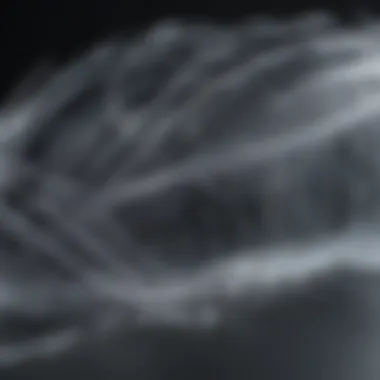
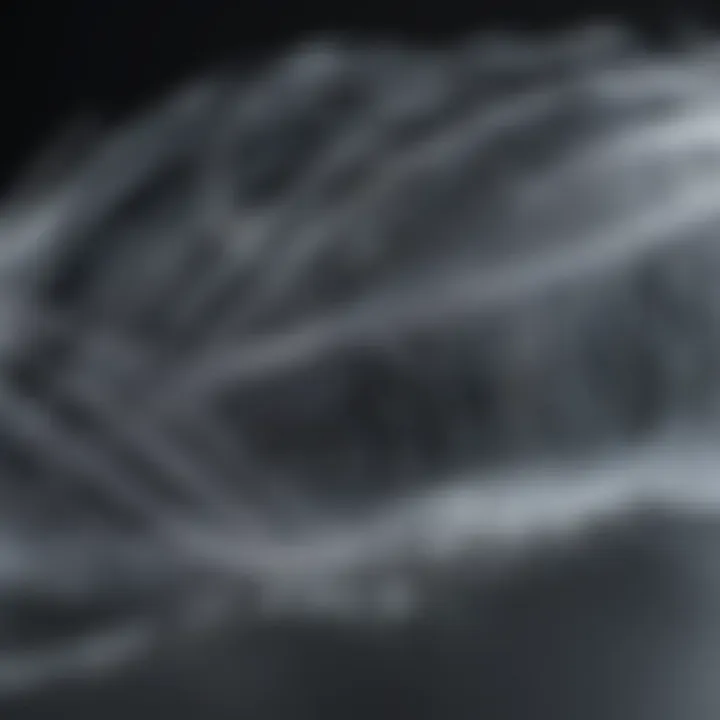
Effective management of these processing techniques will require ongoing research and collaboration across disciplines. Looking toward new technologies and innovations will be key to overcoming these hurdles.
Despite the challenges, advancements in research and production methods offer a promising future for UHMWPE fibre. As these issues are addressed, the application of UHMWPE in various industries will likely expand.
Environmental Considerations
The conversation around Advanced materials like Ultra High Molecular Weight Polyethylene (UHMWPE) fibre must include environmental considerations. These points encompass sustainability, recycling practices, and the potential impact of production processes. Such elements define how industries utilize UHMWPE responsibly while also aiming for ecological balance. Understanding these issues is vital for educators, researchers, students, and professionals engaged in material science and related fields.
Sustainability Issues
Sustainability in manufacturing is no longer optional. With increased awareness of climate change and resource depletion, it is crucial to consider how UHMWPE can be produced sustainably. The production process of UHMWPE involves petrochemical resources, which contribute to greenhouse gas emissions. Strategies for minimizing carbon footprints and efficiently utilizing resources remain a significant challenge.
To address sustainability issues in UHMWPE, companies may explore alternative feedstocks or process optimizations that increase efficiency and reduce waste. Additionally, the life cycle assessment (LCA) of UHMWPE plays a role. By evaluating the environmental impact at every step—from raw material extraction through to disposal—industries can better understand their ecological footprint.
Recycling and Resins
Recycling is a critical topic in the sustainability discourse surrounding UHMWPE. The thermoplastic polymer can be challenging to recycle due to its high molecular weight, which influences its melting point and reprocessing ability. The challenge lies in establishing effective methods for reclaiming and reusing UHMWPE waste.
Recent efforts aim to develop specialized recycling techniques. These methods attempt to break down the polymer into its constituent monomers or smaller chains. This process not only conserves resources but also mitigates waste. Furthermore, some industries are investigating how to incorporate recycled UHMWPE into new products, thus creating a circular economy model. Companies like Kraton Corporation and Honeywell have started initiatives in such areas.
"As the demand for sustainable materials increases, the innovation in recycling methods for UHMWPE may set industry standards for future practices."
This progress will likely influence future research and the development of more environmentally friendly production practices. Ultimately, a greater focus on recycling and resin management will benefit both the environment and the industries reliant on UHMWPE.
Future Trends in UHMWPE Fibre Research
Future trends in UHMWPE fibre research are crucial as the industry seeks to maximize the material's impact across various sectors. As we move towards a more advanced technological era, understanding these trends becomes essential. This section outlines significant aspects of ongoing research and development, focusing on innovative applications, advanced processing methods, and the importance of interdisciplinary collaboration.
Innovative Applications
Innovative applications of UHMWPE fibre are expanding rapidly. Researchers are discovering ways to harness the material's unique properties in areas such as medical devices, sports equipment, and even construction materials. Some current trends include:
- Medical Devices: Development of stronger, lighter implants and support structures. For example, UHMWPE is commonly used in joint replacements, offering durability and reducing wear.
- Sports Performance: Advanced athletic gear, like stabilization braces and protective padding, utilize UHMWPE for its lightweight and high-strength properties.
- Manufacturing and Construction: Emerging uses in composite materials for added strength without significantly increasing weight. Industries are exploring its application in ultra-lightweight bridges and cranes.
These diverse applications not only demonstrate the adaptability of UHMWPE but also underline the sustained interest in its research and commercial utilization.
Advanced Processing Methods
Advancements in processing methods are transforming how UHMWPE fibre is manufactured. Researchers are focusing on more efficient methods to reduce costs and improve product quality. Key areas include:
- Drawing Techniques: Enhanced drawing processes are being researched to ensure optimal alignment of polymer chains, resulting in better mechanical properties.
- 3D Printing: Utilization of 3D printing technologies with UHMWPE opens doors for on-demand manufacturing, tailoring products for specific applications with precision.
- Surface Modification: Techniques aimed at improving adhesion in composite materials can expand the applications of UHMWPE, making it suitable for diverse environments.
These innovations indicate a growing trend toward more sustainable and economical approaches in UHMWPE fibre production.
Interdisciplinary Collaboration
The future of UHMWPE fibre research heavily relies on interdisciplinary collaboration. Different fields, such as materials science, engineering, and medicine, are becoming more interconnected. Recent trends show:
- Joint Research Initiatives: Universities and industries are forming partnerships to explore new uses and improve existing applications of UHMWPE.
- Cross-Disciplinary Knowledge Sharing: Insights from various disciplines help refine existing technologies and create hybrid materials with enhanced properties.
- Broader Innovation Ecosystem: By collaborating across fields, researchers develop more comprehensive approaches to problem-solving, particularly regarding environmental impact and sustainability.
"Interdisciplinary collaboration can open pathways to breakthroughs that single-discipline research often overlooks."
End
In this article, the exploration of Ultra High Molecular Weight Polyethylene (UHMWPE) fibre highlights its significance across various dimensions, particularly in industries such as medicine, textiles, and defense. By underscoring its unique properties, applications, and future trends, we can better understand how UHMWPE revolutionizes material science and engineering fields.
Recap of Key Points
- Unique Properties: UHMWPE fibre exhibits a remarkable strength-to-weight ratio, durability, and resistance to various environmental factors.
- Diverse Applications: Ranging from medical devices to military gear, UHMWPE's versatility caters to numerous sectors.
- Future Trends: Ongoing research promises advancements in processing techniques and innovative applications, pushing the boundaries of what is possible with this fibre.
A comprehensive understanding of these aspects emphasizes the critical role UHMWPE plays in advancing technology and materials.
Final Thoughts
As we reflect on the implications of UHMWPE fibre, it becomes clear that we are at the forefront of numerous opportunities driven by material innovation. The intersection of engineering, science, and practical application hints at a future where UHMWPE could become even more integral to daily lives and industrial processes.
With rapid advancements occurring, staying informed about ongoing research and potential innovations can be greatly beneficial. The significance of such materials extends beyond their current uses, opening doors to future breakthroughs. As researchers, educators, and professionals, it is vital to continuously engage with these developments, fostering deeper understanding and contributing to advancements in the field.
"The innovations brought forth by materials like UHMWPE mark pivotal moments in industrial advancement; thus, the continued study of its properties and applications is essential for further progress."
Through ongoing investment in R&D and interdisciplinary collaborations, we can remain optimistic about the promising evolution of UHMWPE and its far-reaching impact.







